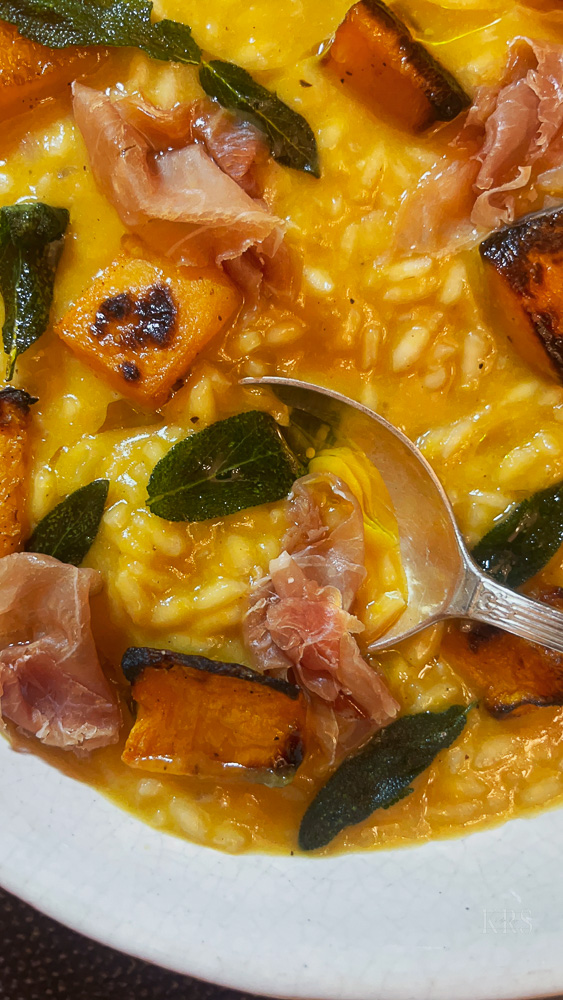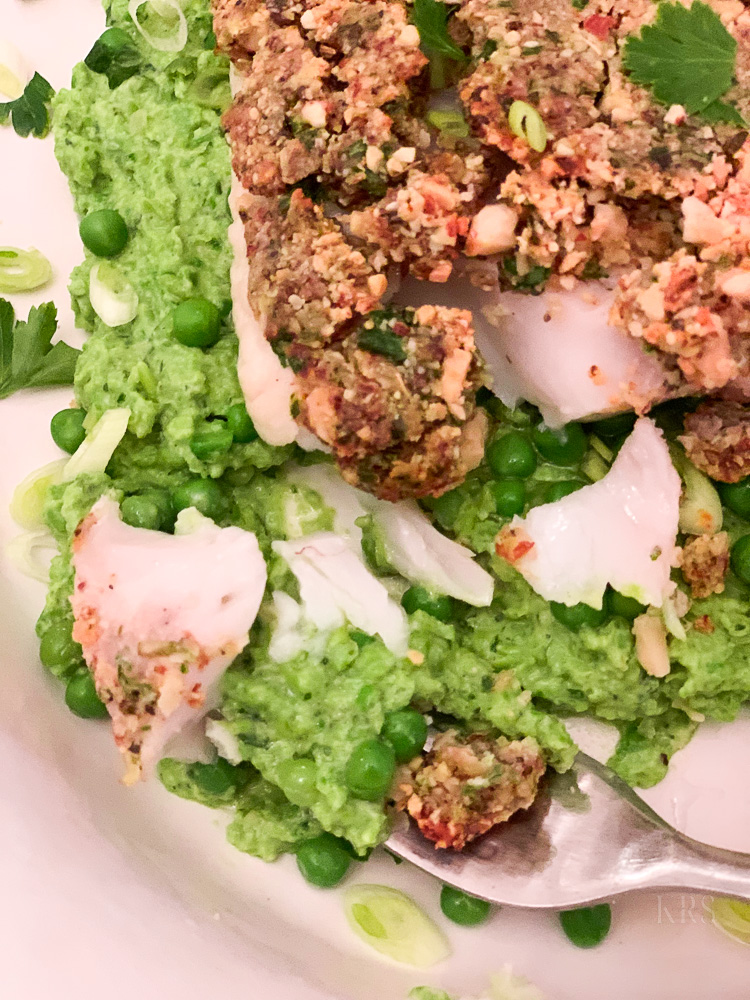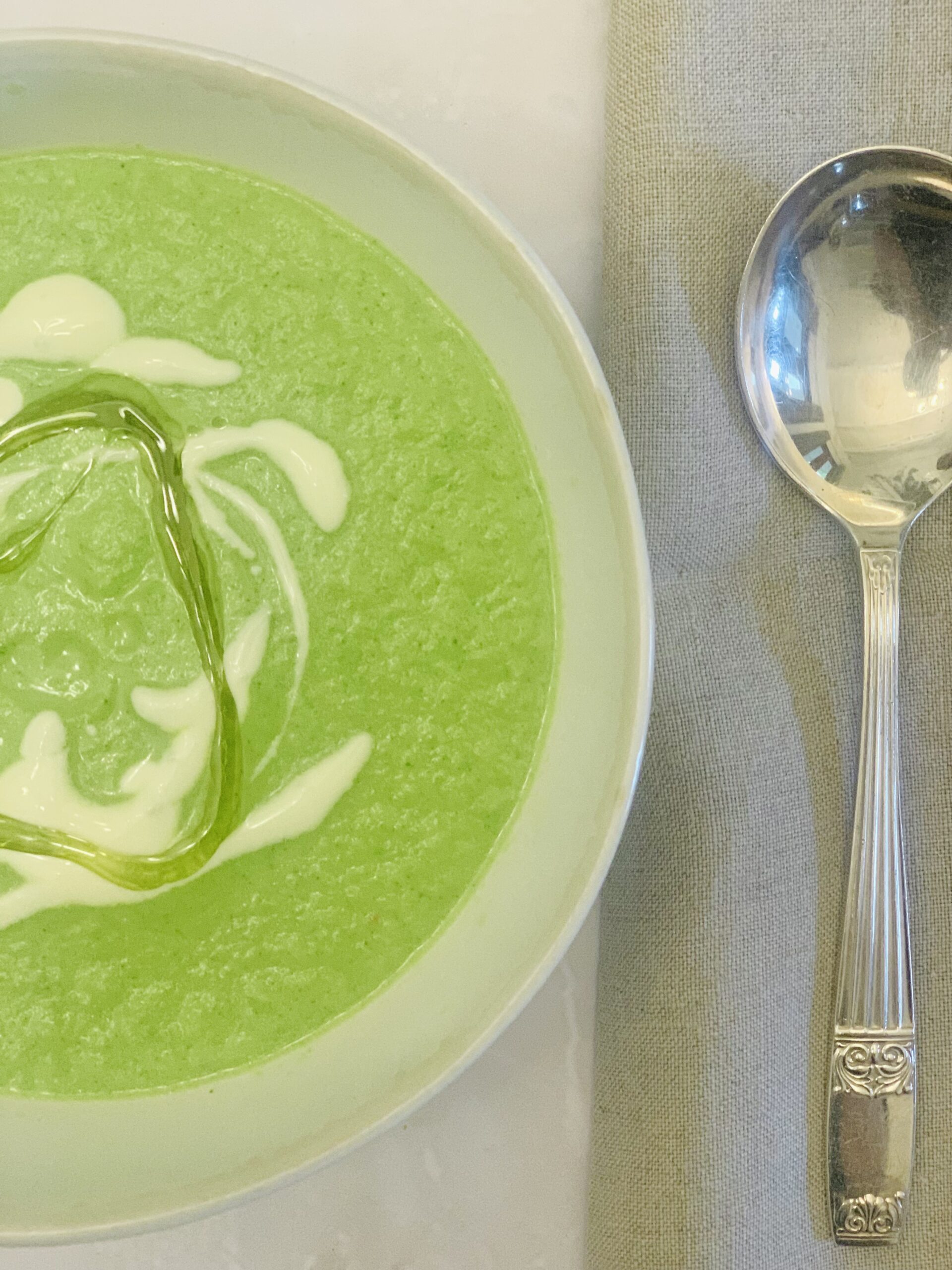Who doesn’t love a tall multi-layered lasagne? This one is a blanc (white sauce) veggie version. As all the recipes I make are inspired by something or other, this one is inspired by a killer butternut and ricotta ravioli that I have made before (I promise I will post a recipe of it soon). It has a delectable light ricotta butternut filling made with caramelized butternut and the most delicious ricotta mixture which is made by adding extra virgin olive oil, lemon zest, nutmeg and some salt and pepper to the fresh ricotta. I cannot resist eating this by the spoonful!
It occurred to me that this ricotta mixture would make a delicious layer to a lasagne, especially when paired with the same caramelized sage-sprinkled butternut. And believe me, it does! I have added a baby spinach layer which adds some bright green to the beautiful lasagne layers. And keeping it blanc, a beautiful bechamel ties everything together.
As I often like to do, I have included a few cooking tips that I have learnt along the way below. Use them or not, but I always do.
- A note on bechamel (white sauce).
I had been making (a somewhat rudimentary version) this for years with (unmeasured) butter and flour for the roux, and then adding some (unmeasured) milk and often cheese if it was destined to be a cheese sauce (as it often was). But when my husband-to-be came along, he showed me his version using a recipe from Prue Leith’s book that he meticulously follows to a “T” (there is no “throwing together” when he is cooking). This method taught me a few refinements to my very basic white sauce. Firstly, measuring the flour, butter and milk means that you are guaranteed to have a good thick consistency instead of stirring the sauce for ages with gradually waning faith that it will ever thicken. Secondly, infusing the milk beforehand not only adds enough flavour for the bechamel to stand on its own without needing cheese, but adding heated milk to the roux helps the bechamel thicken much quicker (who else gets bored of prolonged standing over the stove and stirring?). This step really doesn’t take too much time and will most likely convert you too once you’ve tried it.
- And then a note on fresh pasta vs lasagne sheets.
I find fresh pasta the easier option here, believe it or not. If you don’t pre-cook the dried lasagne sheets, it can feel like it takes AGES for the pasta to soften in the oven (especially for a blanc lasagne as there is less moisture to cook it in). And if you do pre-cook the dried sheets, they inevitably end up sticking together despite adding a generous glug of olive oil to the cooking water. They seem to become stickier as soon as they leave the water, so I always seem to end up burning my fingers trying to fish them out of the water one-by-one, trying to separate those that have stuck together without tearing the sheets. What a mission. My alternative: make a quick ten-minute pasta dough in the stand mixer (see my recipe in my Cooking Basics section). Prep the butternut and pop it in the oven while the stand mixer does its thing. Let the pasta dough rest for 30 minutes while you make the bechamel and the ricotta mixture. And then all you have left to do is roll out the pasta dough, sauté some spinach, and layer the whole thing up. Easy. As. Pie.
- A last note on making this into a tall, tantalising, multi-layered masterpiece.
I make this in a square 8- inch, (deep) cake pan because it is much deeper than the standard rectangular glass or ceramic baking dishes that I grew up making lasagne in. You really just need something deep enough to give you at least four layers of pasta. Why settle for anything less?
Butternut Spinach and Sage Lasagne with Ricotta
Equipment
- 1 Stand mixer optional
- 1 Pasta machine/roller optional
Ingredients
Pasta Dough (optional)
- 300 g flour 00 preferable
- 3 eggs, large
- 1 tbsp olive oil
Roasted Butternuut
- 2 whole medium butternut, peeled and sliced
- 1 tbsp olive oil
- ½ tsp nutmeg, ground
- 1 tsp cinnamon, ground
- 1 tsp brown sugar
- 1 large bunch fresh sage, rinsed *keep 9-12 large leaves of similar size aside 20g
Béchamel
- 80 g butter, salted
- 80 g flour
- 1250 ml milk
- 2-3 bay leaves
- 1 cinnamon quill
Ricotta mixture
- 1 tub fresh ricotta cheese, drained 250g
- 1½ tsp lemon zest or to taste
- ¼ tsp nutmeg
- ½ cup grated parmesan
- 1 tbsp olive oil
Final steps
- 400 g baby spinach, rinsed
- 1 tbsp olive oil
- 1 cup grated cheddar cheese or cheese of choice
- ½ cup grated parmesan
Instructions
Fresh Pasta Dough
- Place the flour in the bowl of a stand mixer fitted with the dough hook. Make a well in the centre and add the eggs and olive oil to the well.
- Place the mixer on the lowest/ stir setting. The dough hook will gradually incorporate the flour into the dough.
- After 5-6 minutes, the dough should be coming together. Depending on the size of your eggs, it may need a small amount of water if it's a bit dry. Add a small amount of water 1tsp at a time down the side of the bowl. Give the dough a minute to come together after each teaspoon is added.
- Once the dough has formed into a single ball around the dough hook, continue on a low/medium speed for another 3 minutes to knead the dough.
- Form the dough ball into a round, flat disc shape. Cover in clingfilm and leave to rest for 30 minutes.
- Divide the dough into four equal pieces. Roll out one piece at a time, dusting lightly with flour. Keep the remaining dough covered in clingfilm until use. Cut the rolled out sheets to fit your baking tin/ dish.
Roasted Butternut
- Preheat oven to 180℃ (350℉).
- Peel butternut. Slice in half and deseed. Slice into thin discs. Toss with olive oil, cinnamon, nutmeg, sugar, salt and pepper and place onto a lined baking tray.
- Top with the sage leaves and roast in the oven for 20 minutes or until the butternut is soft and golden brown. Keep the oven on to bake the lasagne.
Béchamel
- Place the milk, bay leaf and cinnamon quill in a saucepan over a low-medium heat. Bring to scalding (small bubbles should appear on the edges), stirring occasionally to prevent catching and a skin forming on the top. Take off the heat and cover.
- In a medium-sized saucepan, melt the butter on a medium heat. Stir in the flour, nutmeg and season with salt and pepper.
- Sauté until the roux slightly lightens in colour, stirring to ensure it doesn't catch.
- Remove the bay leaf and cinnamon quill from the warmed milk. Pour into the roux slowly, mixing with a whisk.
Ricotta mix
- Add all the ingredients for the ricotta mix to a medium bowl and mix to combine.
- Stir in ¾ cup of béchamel. Season with salt and pepper to taste.
Spinach
- Briefly sauté the spinach in a pan with a drizzle of olive oil for a few minutes until bright green in colour. Sauté in batches if necessary.
Final Steps
- Cover the bottom of your baking dish with béchamel.
- Layer the lasagne as follows:1. Butternut, sage leaves and ricotta mixture2. Pasta3. Spinach and béchamel 4. PastaRepeat above three times, or as much as ingredients allow
- Top the last layer of pasta with béchamel (ideally you want a generous layer of béchamel on top). Sprinkle over the cheeses and top with sage leaves.
- Bake at 180℃ for 30 minutes until golden brown. Rest for 15 minutes before serving.

Add testimonial description here. Edit and place your own text.
John Doe
Codetic



